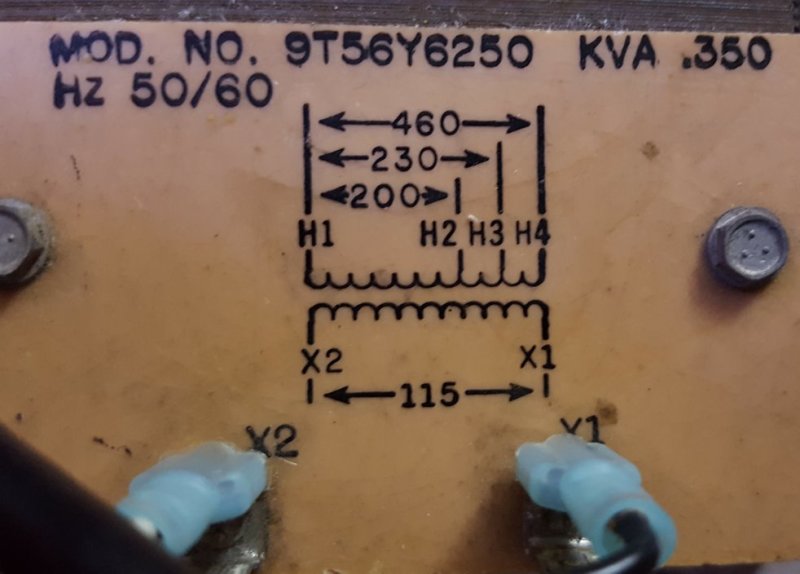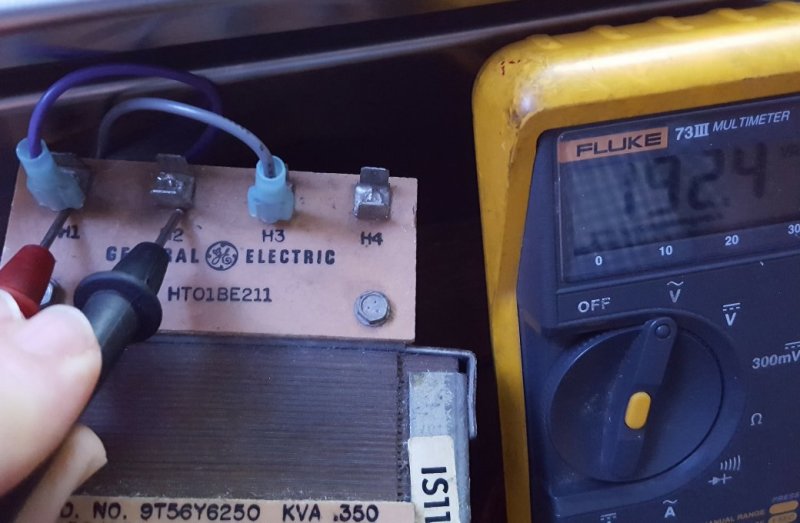I have this little control transformer I've used for years to provide me with 230, or 460V for testing or powering controls I've built.

For the first time I need it for 208V. So I fed it 115.0V and checked the 200V tap and found it only had 186V. I brought it home and plugged it into 120.0V +5.0 more and.... all I get is:

Is this reasonable?
Keith Cress
kcress -

For the first time I need it for 208V. So I fed it 115.0V and checked the 200V tap and found it only had 186V. I brought it home and plugged it into 120.0V +5.0 more and.... all I get is:

Is this reasonable?
Keith Cress
kcress -
